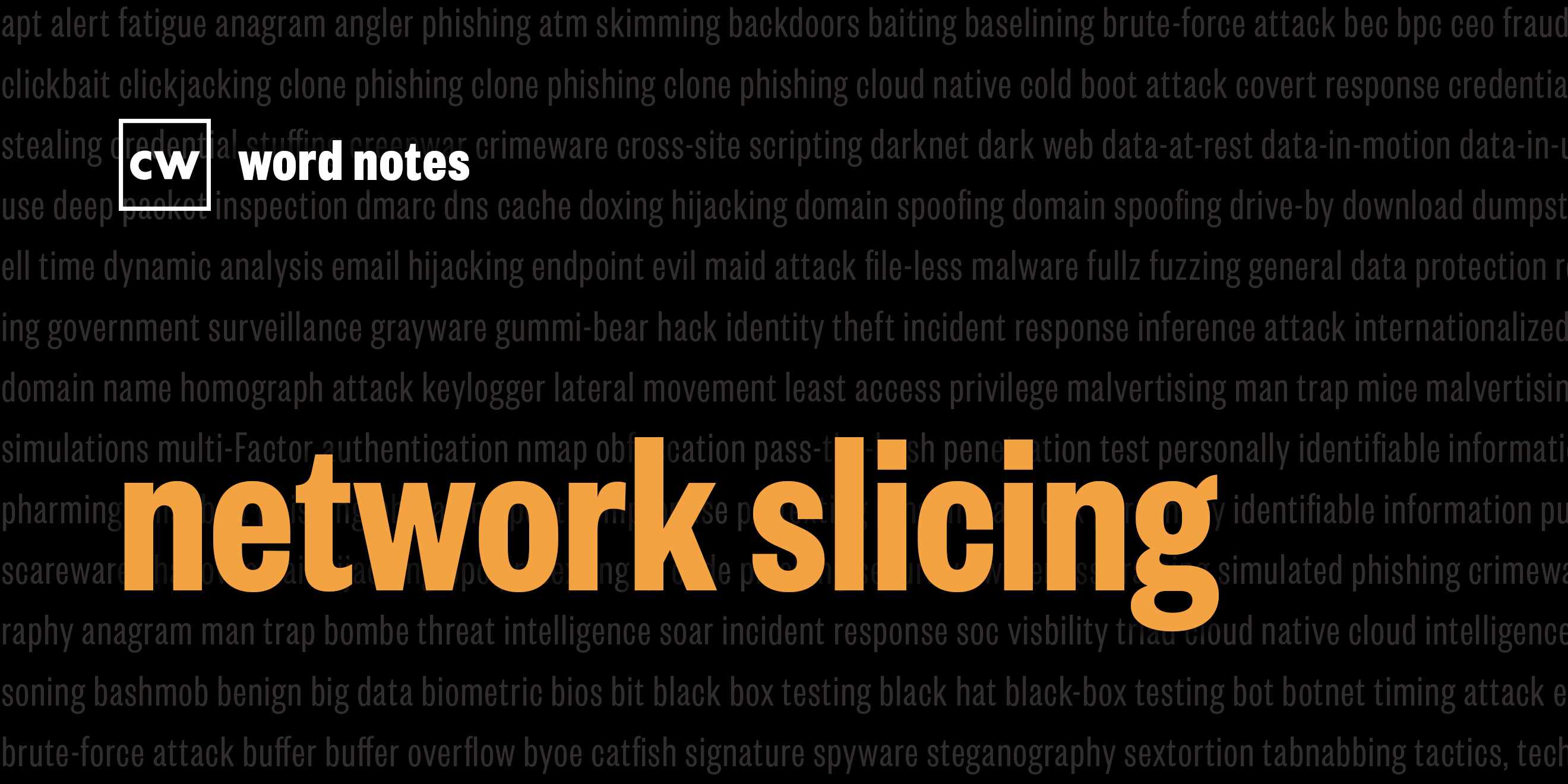
Network slicing (noun)
Rick Howard: The word is: Network slicing
Rick Howard: Spelled: Network as in a group of connected computers and devices, and slicing as in separating branches of data communications within a network.
Rick Howard: Definition: A technique used to create virtual networks within a shared physical network infrastructure.
Rick Howard: Example sentence: Network slicing allows different data sets to be transferred across the same physical infrastructure while remaining isolated from each other.
Rick Howard: Origin and context: Network slicing is an essential capability for 5G networks as it allows telecommunication providers to allocate different amounts of resources to different types of applications depending on their needs. For example, a network provider could allot small amounts of data to customers who simply need to use the network for their mobile phones, while guaranteeing that larger amounts of data will be available for corporate customers.
Rick Howard: Verizon offers some examples of how network slicing can be used in real world environments. With 5G architectures in place, providers should someday be able to dedicate portions of their network to meet their customers' specific needs, by scaling services up or down. Broadly, examples could include enabling the internet of things IoT in a manufacturing environment, or connecting and operating autonomous vehicles in a transport fleet, or separating AI-driven video analytics from point-of-sales information in a retail environment. More specifically, a 5G network slice could support autonomous forklifts in a factory to help ensure communication, so that nearby factory workers remain safe even when there is a surge of communications traffic from other areas in the factory.
Rick Howard: Nerd reference: Dr. Natalie Whitehead, speaking for the Exeter Science Center in the UK in 2021, talked about the reason network slicing is necessary. Essentially, different categories of applications have different needs. For example, some apps are low latency apps like cars talking to each other on the highway. Some are high bandwidth apps like virtual reality games, and some are high density apps like your internet enabled toaster that has to contend with all the other toasters in your network.
Dr. Natalie Whitehead: There are many different devices out there, but they tend to fit into different categories depending on their demands. So it makes sense that we virtually separate the different user types depending on what resources they need, and this is called network slicing. It's basically a way for the network providers to make sure that each user type has the right quality of service for their needs. Although network slicing makes things easier, it's still pretty challenging to share out resources to different slices. This is because the network will be really complex and it'll be changing constantly.
Dr. Natalie Whitehead: Just think of how many users in each slice will be demanding different resources at different times. How do you process all those requests as quickly as possible? This is made even more challenging by privacy laws. Network providers aren't allowed access to your user requirements, so it's difficult to get accurate information about what resources are required and when. In addition, all these network resources are limited. You just can't give every device a super high bandwidth and low latency service. It would cost too much energy and too much money.
Rick Howard: Word Notes is written by Tim Nodar, executive produced by Peter Kilpe, and edited by John Petrik and me, Rick Howard. The mix, sound design, and original music have all been crafted by the ridiculously talented Elliott Peltzman. Thanks for listening.

